
© Aleksandar Antonijevic, courtesy NBoCanada. (Click image for larger version)
national.ballet.ca
Jan 2016: NBoC at the Washinton Kennedy Centre
Following the huge success of Alice’s Adventures in Wonderland, the National Ballet of Canada will bring to the Kennedy Center another creation by Christopher Wheeldon and his artistic team: the U.S. premier of The Winter’s Tale, an intriguing dance-adaptation of Shakespeare’s play, which, just like Alice, was co-produced with Britain’s Royal Ballet.
For the last few years the National Ballet of Canada has gained considerable prominence on the international ballet scene, boasting an array of talented and exciting dancers as well as acquiring a unique repertoire of works – short and full-length ballets – by some of the most renowned choreographers of today. This achievement is attributable in no small measure to the artistic vision and aspirations of the company’s artistic director, Karen Kain, whose name is synonymous with ballet in Canada.
Kain has spent nearly a half a century with the National Ballet and its school, first as a student, then as a dancer and now as its artistic leader. In her dancing years she was this company’s brightest star, the most illustrious ballerina that Canada has ever produced. After retiring from the stage at the age of 46, Kain continued with the company as artistic associate until 2005, when she was selected for the position of artistic director.
I had the chance recently to talk with Karen about her dancing career, her 10-year tenure as The National Ballet’s artistic director and the company’s new collaborations and commissions, including the highly anticipated production of The Winter’s Tale, which Washingtonians and visitors to the Nation’s Capital will be able to see at the Kennedy Center Opera House on January 19-24, 2016.
What brought you to the National Ballet of Canada?
As many little girls do, I started ballet classes because I liked to dance. I was born in Hamilton, Ontario, which is about an hour away from Toronto and I had my first dance lessons at a very small local community center. After a few years, my teacher told my parents that she felt I was talented and they should take me to audition at the National Ballet School of Canada (NBSC) in Toronto, so my parents took me to audition and the director of NBSC, Betty Oliphant, offered me a place at the school. I had a partial scholarship since my parents couldn’t afford the tuition. I was there for all of my training from the time I was 11 years old. When I turned 18, I was offered a contract by the founder and artistic director of the National Ballet of Canada (NBC), Celia Franca, and I joined the company.
When you reflect on your dancing career, how would you describe it? What are your most cherished memories?
At this point in my life my dancing career seems so far away, but when I look at it in perspective I realize what incredible opportunities I was given and I see the people who gave me these opportunities. One of the most important people in the beginning of my career was Rudolf Nureyev. It was just serendipity that the National Ballet of Canada started the relationship with him in 1972 when the company was doing his Sleeping Beauty.
Nureyev immediately spotted me and pushed for me to dance with him despite the fact that I was too tall for him – he didn’t seem to care. He became a true mentor and a friend; and for a decade he was a huge inspiration and a huge help in my career. Not only did I dance with him at the National Ballet of Canada but I also performed with him as a guest artist around the world. He took me places where nobody even heard of me. He was my guardian and my teacher. He believed in me. Not that other people didn’t: I had many opportunities with other choreographers, including Glen Tetley and Eliot Feld. There were other mentors too, like Erik Bruhn, who had worked with NBC consistently for many years and then became our artistic director for two years until his death in 1986. He was instrumental in inspiring me and giving opportunities in my career. But in my first decade with the company it was mainly Rudolf Nureyev who took me under his wing.
There were many people who gave me the kind of career that I enjoyed. I always knew that, and now I appreciate these people even more.
What was Rudolf Nureyev like as a dancing partner, a choreographer and a person?
He loved ballet. He had his own ideas about dancing that were influenced not just by his original training in Russia but by everything that he learned when he worked in France and England. He was extremely hard-working, and he was obsessed with dancing. He had a tremendous amount of patience and time for other dancers who were as obsessed with dancing as he was. Before I made my debut in The Sleeping Beauty he coached me. He was dancing seven shows a week and between matinee and evening performances he would come and rehearse me. He didn’t rest between the shows. He had an incredible work ethic and nothing was more important to him than ballet. We were all his disciples as young dancers, and there was no end to the generosity of spirit that he had about educating us as artists.
I think he didn’t sleep a lot. He was always on the move. Maybe he knew that his life was not going to be very long. He had more energy than any person I’ve ever met in my life.
You retired from the company in 1997. Was it hard for you to leave the performing career?
I was really ready to leave. I probably danced for too long. I was already very arthritic (laughs) and dancing had become very difficult for me. But I had this wonderful opportunity to do a cross-Canada tour to say goodbye to everybody who supported me as an artist throughout my career and I was grateful for that chance. But quite honestly I wasn’t dancing at my best in those last years. I tried as hard as I could but it was very difficult. I think I should have stopped sooner.
When in 2005 you were offered the artistic directorship of the National Ballet of Canada, did you ever hesitate, or did you knew right away that this job was what you wanted to do and what you were capable of doing?
After I retired I was asked by James Kudelka, who was artistic director then, to be artistic associate of the company. He didn’t really define the job for me, so I started learning how to support the vision of James Kudelka. I ended up learning a lot about fundraising and about the other side of running a ballet company, rather than just the artistic side. James resigned very suddenly and I hadn’t thought or even prepared myself for doing his job. I was very busy as Chair of the Canada Council for the Arts at that time. Over the years, I learned that this job is bigger and harder than I have ever imagined, but I do enjoy most of it.
What inspires you in your job as artistic director? What gives you the most satisfaction?
It’s the actual work that goes on stage. I get the greatest satisfaction from working with incredible choreographers like Alexei Ratmansky, Christopher Wheeldon, and Wayne McGregor as well as our own in-house choreographers like Guillaume Côté and Robert Binet. It’s been great to have these talented artists coming into the midst of the company and realizing their inspiration and their particular vision.
The best part of being a dancer is to work with inspiring choreographers, to explore different ways of moving and feeling and thinking and to experience this wonderful combustion of creativity. And for me, it is the best part of this job to enjoy this creative process and to watch what happens on the stage. This is really what keeps me loving my job.

© Bruce Zinger. (Click image for larger version)
In 2011 Alexei Ratmansky choreographed a brand-new production of Romeo and Juliet for the National Ballet of Canada. How did this commission happen?
I read a lot about Alexei and I watched a number of his works on DVD. I saw his talent for clear storytelling and I saw the intense musicality in his works. I love the way he uses classical ballet steps: he doesn’t throw the classical tradition away or reinvent it like some choreographers do; yet he pushes ballet further.
I knew that he was incredibly busy – he was still artistic director at the Bolshoi Ballet then – and I knew that I would never be able to attract him to consider anything other than something that nobody else would offer him at that time. So I decided that Romeo and Juliet would be a good place to start. We already had a beautiful production of Romeo and Juliet by John Cranko, but we had danced it for many years and a lot of other ballet companies were performing this production, so I thought it would be wonderful to have a unique version of Romeo and Juliet. I cannot even remember how I got Alexei’s phone number to call him in Moscow, but we connected and I made my offer. I could tell he knew right away that this was a unique opportunity. He told me that he wanted to do this production but at that time he was too busy, so we just kept in contact. In 2011, he made the time; he was with us for six weeks to create it.
When the company was dancing it again this season, Alexei came to attend the dress rehearsal and the opening-night performance and he was very happy with the results. I was really glad to have him back because it always lifts the production up another notch when the choreographer comes and re-inspires everybody.
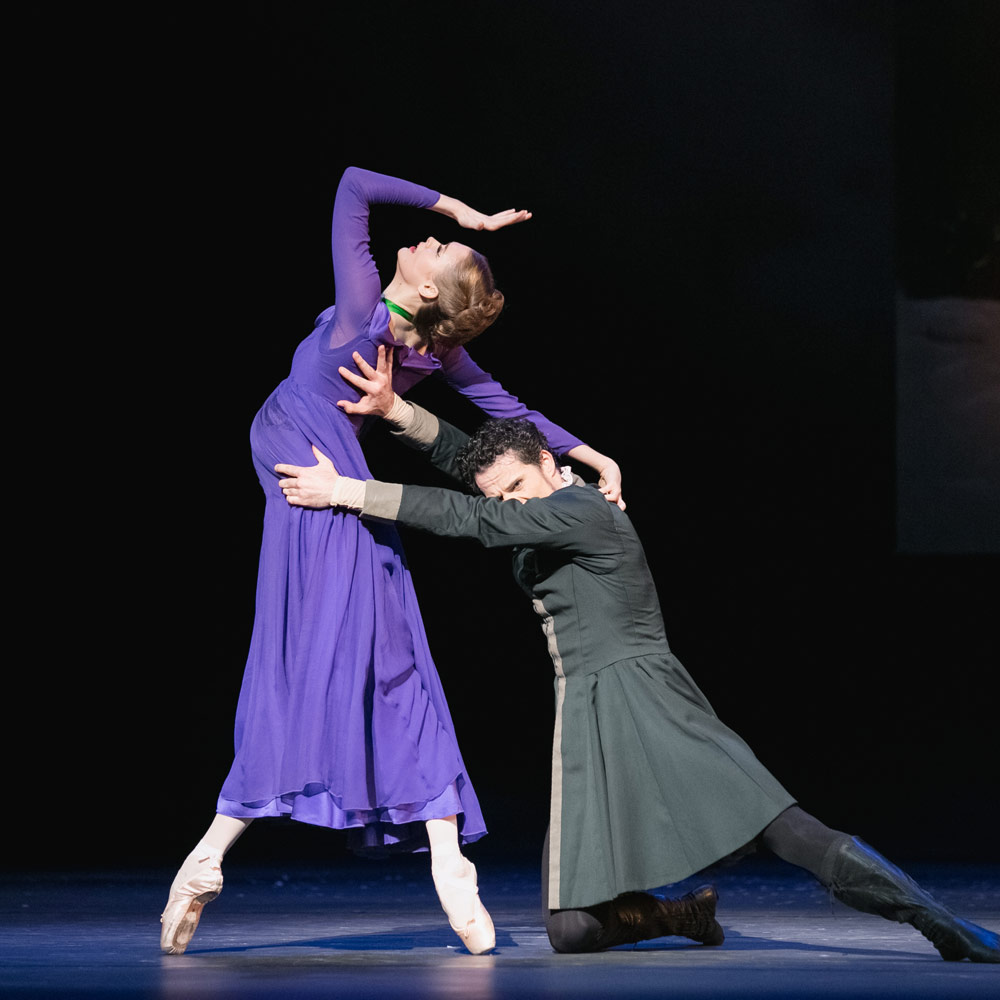
© Karolina Kuras. (Click image for larger version)
Please tell me about your collaboration with Christopher Wheeldon and the National Ballet of Canada’s two co-productions with the Royal Ballet – Alice’s Adventures in Wonderland and most recently The Winter’s Tale. How did this collaboration begin?
I have always admired Christopher Wheeldon. I don’t think he knew the company all that well, so I invited him to come to Toronto and asked if we could do his Polyphonia, and he agreed. I was hoping that sometime in the future Christopher would come back and create something original for us; but then he offered the opportunity for the National Ballet of Canada to take part in the production of Alice’s Adventures in Wonderland.
Our company comes from the British tradition of acting-dancing and of storytelling. I think Christopher saw that in the works we were doing when he was here; and I think he felt that we had the resources and talent to do it well. Of course I had to speak to Monica Mason, who was artistic director of the Royal Ballet then. I don’t think that the Royal Ballet did a major co-production before… And after it worked so well with Alice, Christopher told me about The Winter’s Tale.
Please tell me about this new production. Was it a risky choice?
The Winter’s Tale is a complicated play and a dark story, so yes, it was a risky choice. I had heard about this Shakespeare play but I had never seen it, so I consulted with some of my friends in the theater community. They assured me that it would make a great ballet because it’s a timeless story of love and forgiveness that takes place in two different locations, and it has all these real human emotions – love, jealousy, remorse and redemption – that are so powerful and touching. I trusted my artist friends who knew this play well, and I certainly trusted Christopher Wheeldon and his artistic team. The risk was well worth it because the production is so beautiful.
What do you think is unique about this ballet?
The Winter’s Tale has everything that a ballet should have, but it’s a ballet of today. It demands the kind of artists that we have now. It’s not a fairy tale but it has real human emotions, even if they are in slightly period dress. It’s a wonderful story that is timeless, and I believe that this ballet will be timeless too. I really believe that this ballet will have a very long life.

© Karolina Kuras. (Click image for larger version)
How did the audience respond to The Winter’s Tale?
We just had its premier here in Toronto and many people told me that it was the most beautiful, the most touching ballet they have ever seen. They were overwhelmed by it in a very positive way. The production has unbelievably gorgeous decorations; and the choreography is fantastic. The second act is nothing but bravura dancing; it challenges and inspires the company. We had a huge success with this ballet here.
How do you select the repertory for the company’s season? What are your guiding principles for selecting the works?
I have to make sure that we can predict a certain amount of box-office, because if we don’t the company will be in a financial trouble. We want to make sure that our subscribers will renew their subscriptions since these subscriptions are very important for our financial stability. I also have to think about which choreographers will be available to work with us and how many original creations I can afford to do. We always have The Nutcracker and we can always count on it to help us; but my other full-length ballets have to be spaced out over years – I cannot repeat them very often. I have to have a good mix of ballets that will bring enough box-office revenue but will also keep my dancers happy and challenged in doing the roles they love to do. There are so many variables. It’s a very complicated process – much more complicated than I have ever realized.
How do you identify and develop choreographic talent?
Every two years we have a choreographic workshop which takes place in our studios, and my dancers and guest choreographers participate in it. I often use the pieces created during these workshops for our galas as well as for the company’s apprentice group. When we have the International Competition for the Erik Bruhn Prize, I ask my choreographers to create something for the young dancers, because they need to have a contemporary piece and a classical piece. So I try to identify and develop our own choreographic talents and give them every opportunity to grow and improve.

© Barbara Cole, courtesy NBoCanada. (Click image for larger version)
Please tell me about the company’s upcoming world premier of Le Petit Prince by Guillaume Côté.
Guillaume Côté has been choreographing for a number of years and he has been demonstrating quite a lot of talent. Le Petit Prince was his idea. He convinced me that he was ready to do it and we were able to find a donor to finance this production. Over the years, Guillaume has done a number of smaller pieces. Last year, he did a 40-minute ballet which was very well received. So, yes, I am trying to give him chances when I can, and this is the biggest chance he’s had so far. We keep our fingers crossed that it works. We have very high hopes and we are very excited about it.
When you took the helm of the company 10 years ago, what did you want to accomplish as artistic leader? What do you think are your most notable achievements during these years?
After being with the National Ballet for so many years, I had three very straightforward goals. I thought that the company needed to raise its level of dancing and to have a more varied repertory; and we needed to be part of the world conversation as a ballet company. The latter could be only achieved if we had better dancers and a more diverse repertory, including more original works. I think in the last 10 years these things have been achieved but it’s a constant work to keep them up.
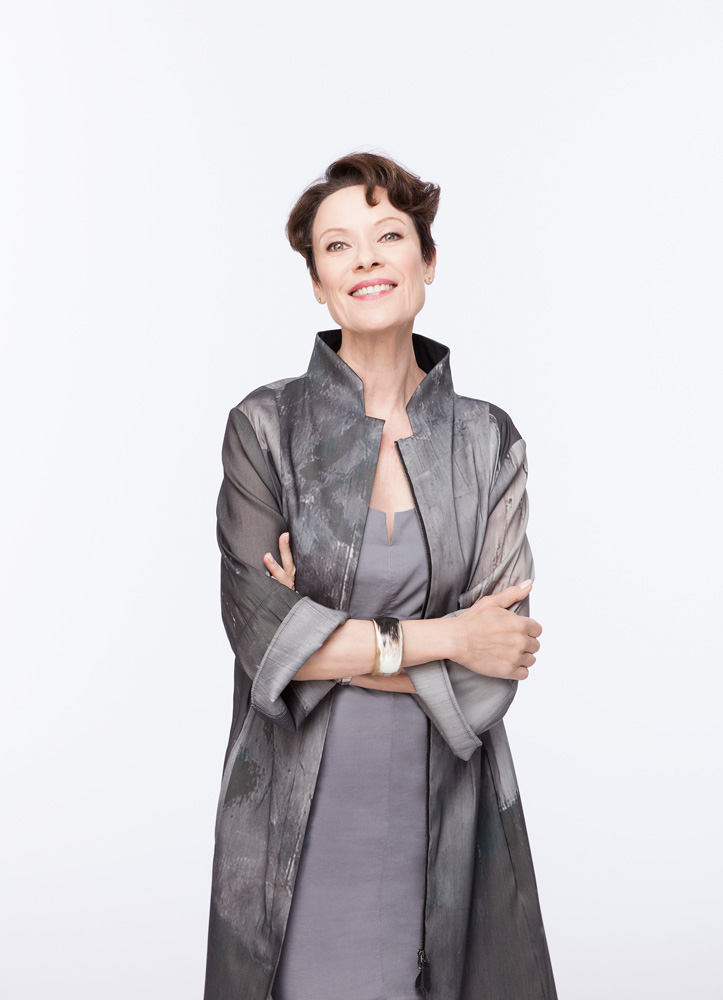
© Aleksandar Antonijevic, courtesy NBoCanada. (Click image for larger version)
When a ballet company is run by a choreographer, it’s very normal that the point of view of the company becomes the point of view of that choreographer. In the past, we were very much focused on the works of James Kudelka; we had a large number of his ballets, which we still perform frequently. I thought we needed to diversify the repertoire a lot more. I wanted to work with other choreographers of our time. That’s why I started reaching out to Wayne McGregor, Christopher Wheeldon and Alexei Ratmansky. I knew that they could take the company to the next level.
What are you looking forward to in the next few years?
I have a lot of ideas for the new repertory which I cannot share with you yet (laughs) because I haven’t even shared them yet with my Board of Directors. I feel I have a very strong company now. I have very interesting dancers like Guillaume Côté, Evan McKie, Svetlana Lunkina and Jurgita Dronina. I have a mix of our fantastic home-grown Canadian dancers and international artists who are interested in being with us. And I have a huge talent coming up. In Washington, if everything goes well, you will see a very talented 21-year-old dancer, Hannah Fischer, who was trained at our school before she joined the company. She won the Erik Bruhn competition a year ago and was chosen by Christopher Wheeldon to dance one of the leading roles in the opening-night performance of The Winter’s Tale.
You are a member of this unique club of women who run a major ballet company. What do you think should be done to have more women taking leadership roles in the ballet world?
First of all, I think it’s changing. There are more women around the world who are running ballet companies. Like in everything, I really think it should be the right person for the job at the time when a company needs a new director. It shouldn’t be whether it’s a man or a woman – we have already passed that. Although I know that history shows that there are more men than women who lead ballet companies, I think people started realizing that women really can do the job and have a unique perspective and just as much courage and analytical and forward thinking as men. I think that a Board of Directors will pick the right person for the job at the time they need to decide. And if there are enough women who have the courage to stand up and say, ‘I believe I can do this,’ it will be equalized for sure.
What is more rewarding, to be a dancer or artistic director?
I cannot replace the best moments of my dancing career. There was nothing more important to me on the planet than to be a performing artist. I loved it. Now I have replaced the pleasure that I got when I was a dancer by trying to create opportunities for the next generations to shine and to give them the kind of opportunities that I was given. It’s hugely satisfying. I am very happy to be in the position to envision a very bright future for the organization and for the individual artists inside this organization, and I am just doing my best to provide these opportunities. That’s the only reason I am here.
Thank you very much, Karen.









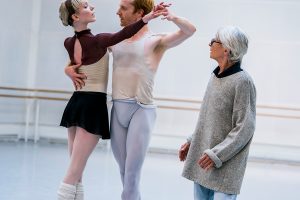



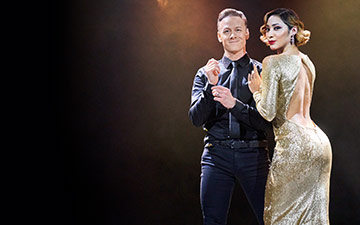
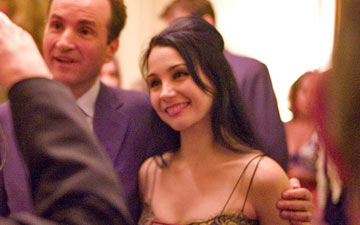

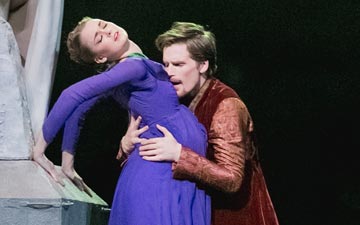
You must be logged in to post a comment.